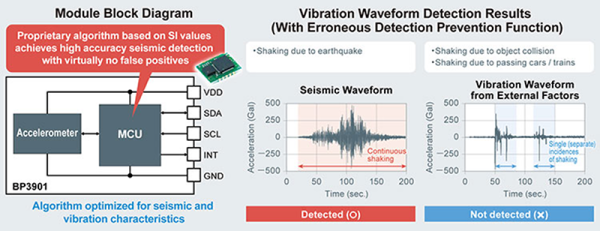If you’ve ever been in an earthquake you’d assume it would be pretty easy to detect one. If things are shaking, there’s an earthquake. In reality, though, a lot of things can shake a sensitive instrument that is detecting shaking, so — for example — mechanical sensors will produce a lot of false positives. Now, however, you can filter out errant vibrations and reliably detect earthquakes on a chip.
The Rohm BP3901 has two primary features. First, it supposedly eliminates false detections due to things like a heavy truck rumbling by. In addition, while most sensors must be mounted completely flat, the BP3901 has a compensation method for angle which lets you mount it as much as 15 degrees rotated in either direction and still get good results. That’s because the BP3901 is based on the combination of an accelerometer and a microcontroller in one package to detect movement, characterize it based on an algorithm and reacting through an I2C bus and an INT pin.
Rohm suggests you could power the BP3901 for about 5 years with two AA batteries with the example of averaging 10 three-minute wake up events a month. We aren’t sure why we want to detect an earthquake, but we think we do. Imagine a large sensor network sending back real-time data as an earthquake happens — something we saw last year using Raspberry Pi. That project used a Geophone as the detector, which could be replaced by this chip. Rohm plans to have “OEM quantities” for sale next month which we hope means we can get smaller quantities from distributors.
A lot of people spend a lot of time thinking about how to predict earthquakes, as we’ve seen before. Of interest, the ancient Romans may have had a way to deflect earthquakes, so they probably didn’t care as much about detecting them.












